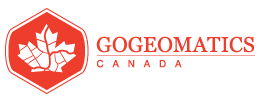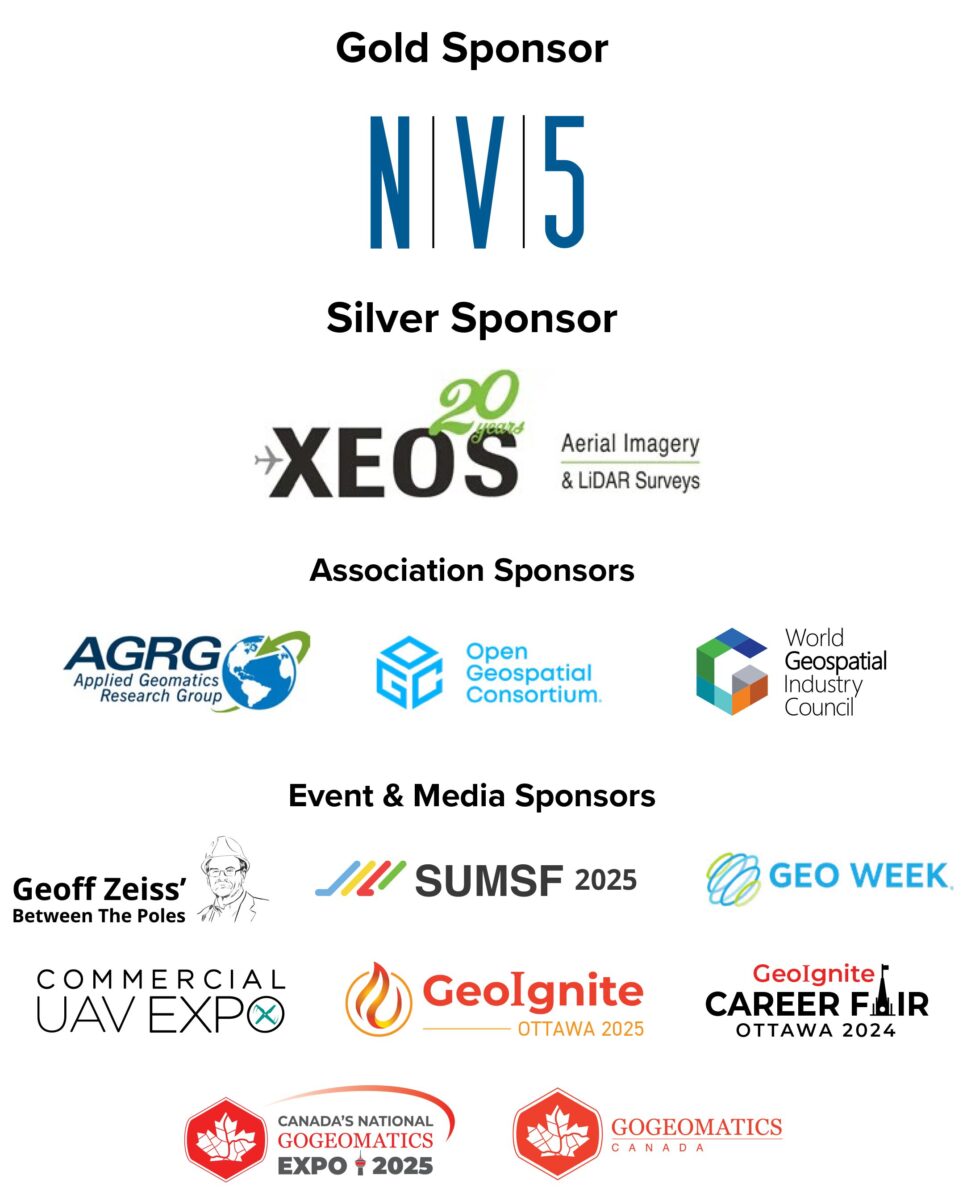
A distinguished panel of experts from various sectors gathered at Lidar CANEX 2025, to discuss the evolving landscape of Lidar technology in Canada. The premier B2B online forum was held on January 29.
LidarCANEX is Canada’s premier annual event focused on the latest advancements in Lidar technology. Hosted virtually, the event brings together experts, professionals, and innovators in the geospatial industry to explore new techniques, tools, and trends that are shaping the future of Lidar and geospatial data. From AI-driven mapping to its applications in various industries, LidarCANEX serves as an essential platform for learning, networking, and discovering the cutting-edge of Lidar technology.
The conversation spanned advancements in mobile mapping, AI integration, drone regulations, and satellite-based Lidar, highlighting the industry’s rapid growth and the challenges ahead. With a focus on innovation and collaboration, the panelists provided valuable insights into the future of geomatics and its impact on infrastructure, environmental monitoring, and national geospatial strategies.
Emerging Trends and Innovations in Geomatics: Insights from Industry Leaders
Moderated by Dr. Tim Webster, Research Scientist with the Applied Geomatics Research Group at NSCC, the panel featured industry leaders including Alex Hill-Stosky, Manager of Reality Capture Development & Regulation at Eagle Engineering & Consulting; Charles Papasodoro, Project Leader at Natural Resources Canada; Gavin Schrock, Land Surveyor and Consulting Editor for GoGeomatics; and Kenneth Ang, Geomatics Lead at Terra Remote Sensing Inc. Together, they provided insights into advancements in mobile mapping, AI integration, drone regulations, and satellite-based Lidar, highlighting the industry’s rapid growth and the challenges ahead.
Advancements in Mobile Mapping and Reality Capture
Hill-Stosky from Eagle Engineering shared details about a recent large-scale project in Newfoundland, where his team successfully mapped 8,000 kilometers of telecommunication networks. Originally estimated to take three years using conventional methods, new reality capture technologies allowed them to complete data collection in just over a month. This project demonstrates how modern geomatics tools are revolutionizing data acquisition and processing speed.
Additionally, he discussed how clients often request enriched 2D shapefiles from extensive 3D data sets, despite the wealth of information contained in point clouds. The challenge remains balancing client demands with the full capabilities of mobile mapping and AI-enhanced data analysis.
National Hydrospatial Network and Digital Twins
Papasodoro from the Canadian Hydrospatial Network introduced a new initiative replacing the former National Hydro Network. This new system integrates Lidar data for enhanced hydrographic accuracy, a shift that mirrors similar projects in the United States. The initiative prioritizes regions where Lidar coverage is most complete, starting with the Atlantic provinces. He also discussed ongoing efforts to develop urban digital twins, leveraging high-resolution geospatial data to create virtual models that can be used for infrastructure planning and environmental monitoring.
Integration of AI and Quantum Sensing in Geomatics
Schrock, a specialist in geospatial research, highlighted the surprising advancements in terrestrial photogrammetry, noting that handheld photogrammetric tools can now rival large-format terrestrial scanners in precision. He also emphasized the rise of multi-sensor stacks, where multiple sensors work together to improve data quality and stability.
The discussion also touched on quantum sensing, a cutting-edge field distinct from quantum computing. UNB is leading research in quantum gravimetry, while other institutions are exploring quantum Lidar, which has the potential to map underwater environments even in turbid conditions. By leveraging entangled photons, quantum Lidar offers unprecedented levels of sensitivity, which could revolutionize hydrographic and subsurface mapping.
Drones and Beyond Visual Line of Sight (BVLOS) Regulations
Ang from Terra Remote Sensing provided updates on Canada’s evolving drone regulations. Transport Canada is introducing two new licensing categories that will allow for BVLOS operations and permit drones up to 150 kg, opening new possibilities for larger-scale aerial surveys. This regulatory shift could accelerate the integration of high-resolution sensors into UAVs, enhancing aerial surveying capabilities. However, challenges remain in terms of power supply and payload limitations, making hybrid or gas-powered drones a potential solution for extended flight times.
Lidar and Hydrographic Surveys in Canada
The conversation explored the increasing use of Topo-bathymetric Lidar for river and coastal surveys. Quebec has led the way in flood mapping using this technology, achieving up to 80% riverbed coverage in some areas. New Brunswick is also investing in similar initiatives, co-funded through federal programs. Despite its benefits, Topo-bathymetric Lidar faces challenges in areas with deeper or turbid waters, necessitating complementary technologies such as sonar.
Satellite-Based Lidar and Commercialization of Space-Based Geospatial Data
The panelists discussed emerging satellite-based Lidar initiatives, such as the New View constellation, which aims to provide high-frequency global Lidar coverage. Unlike traditional airborne Lidar, New View is designed to offer lower-density but regularly updated Lidar data, which could be particularly useful for large-scale environmental monitoring and disaster response.
Additionally, radar-based constellations like those being developed by Array Labs are expected to create 3D geospatial data using advanced radar technologies. The commercialization of space-based geospatial data is accelerating, providing new opportunities for remote sensing applications.
Potential Trade Restrictions Between Canada and the U.S.
The discussion briefly addressed rising trade tensions between Canada and the United States and their potential impact on the geomatics sector. While cross-border collaboration has historically been strong, some Canadian firms are considering diversifying their equipment sources beyond the U.S. to mitigate risks associated with potential trade restrictions. However, experts noted that Canada’s geospatial industry is highly capable and well-established, with strong relationships with international suppliers, particularly in Europe.
The Future of Geomatics: Convergence of Technologies
Looking ahead, panelists emphasized the convergence of aerial, terrestrial, and underwater surveying technologies. AI and automation are playing a larger role in processing massive geospatial datasets, while advancements in quantum sensing and Lidar technology are expanding the frontiers of data collection.
Additionally, the growing availability of open geospatial data, combined with national-scale data initiatives, is fostering innovation in infrastructure management, environmental monitoring, and urban planning. While challenges remain—ranging from data interoperability to evolving regulations—the industry is poised for continued growth and transformation.
This panel discussion showcased the rapid advancements in the geomatics industry, from AI-driven mapping solutions to new regulatory frameworks for drone operations. Emerging technologies such as quantum sensing and satellite-based Lidar are pushing the boundaries of geospatial data collection, while government initiatives continue to drive nationwide geospatial strategies. With these developments, the future of geomatics is more promising than ever, offering innovative solutions for infrastructure, environmental sustainability, and beyond.
LidarCANEX 2026
If you are a Lidar enthusiast or want to learn more, join us for LidarCANEX 2026 and keep an eye on the website: https://lidarcanex.com/.
And here is the sign-up form to get more information for LidarCANEX 2026 in your inbox.
Thank You to Our Sponsors






Be the first to comment